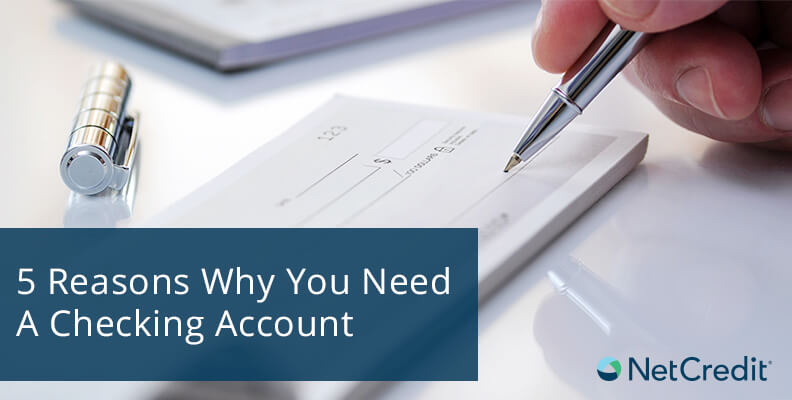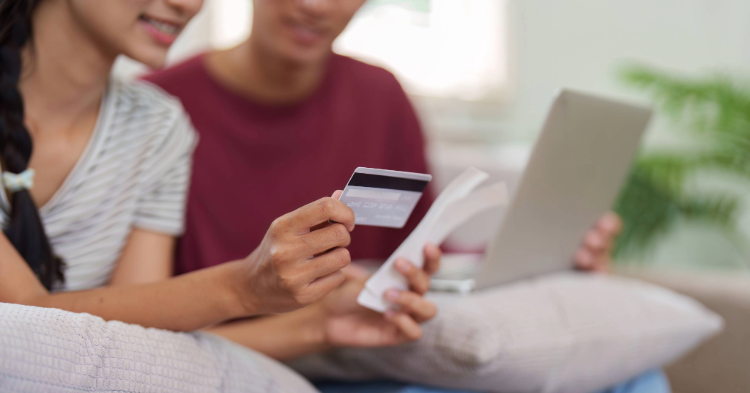There are an estimated 24.5 million people in the United States who are underbanked.1 While the biggest reason for avoiding banks is the fear of not having enough money to open an account (57.4%), an additional 10.9% report that they simply did not trust banks or believed the fees were far too high (9.4%).1 Unfortunately, one poor personal experience or second-hand story of a negative bank relationship can lead some to dislike the banking system and avoid it altogether. However, there are several advantages to having a checking account with a bank.
From safety to convenience and financial planning, each advantage can ultimately help you get your personal finances in order. Read on for the top five reasons that a checking account can benefit you.
1. Safety and Protection
Even in a so-called “safe place,” storing cash at home poses several risks, from robberies to fires to natural disasters. Consumer bank accounts at federally insured institutions, on the other hand, are subject to protection thanks to the FDIC’s standard deposit insurance, which covers up to $250,000 per person, per bank, for each account ownership category. Since the creation of the Federal Deposit Insurance Corporation (FDIC), consumers have enjoyed the security offered by FDIC insurance and the knowledge that their deposits are safe up to the FDIC coverage limit.
2. Convenient and Free Check Cashing
Without a bank account, cashing your paycheck can be a complex process. Banks only cash checks for non-customers when the check is issued by that specific bank, which means having to go to one of that bank’s branches. Plus, many banks often charge a cashing fee when cashing checks for non-customers.
While other check-cashing services do exist, there is often a flat or percentage fee involved. If you need to deposit checks frequently (or even 1 – 2 per month), these fees can quickly add up. By opening an account with a bank you can avoid these costs and even set up direct deposit through your employer to avoid the physical process all together, saving you both time and money.
3. Convenient and Free Bill Pay
From rent to utility to cell phone payments, monthly bills are a fact of modern life. Paying those bills without a bank account involves money orders or physically delivering dues in cash, both of which can be a chore — not to mention expensive. With a bank account, you can write checks. Better yet, many businesses allow for automated bill pay, which makes it easy to pay on time every month without fault. Some banks allow you to set up auto-pay through their online dashboard, or you can set it up through your service provider’s website.
4. Debit Card Convenience
Carrying a debit card lets you avoid carrying around large sums of cash, and many banking institutions offer protection in case your card is lost or stolen. Plus, it’s not only safer, it’s also convenient to pay with debit.
In addition, many banks now offer check cards within the MasterCard or Visa network for checking account holders. These check cards allow individuals to use those cards wherever MasterCard or Visa is accepted, much like a regular credit card.
5. Budgeting Tools
Withdrawals and purchases are automatically tracked on bank accounts, and you can receive a report of your spending accounts via a monthly statement. This is an excellent way to see exactly where your money goes each month, and from there you can fine-tune your personal budgeting habits. Plus, new online banking systems make it even easier to see and organize purchase history from your desktop or mobile device.
While it is true that less-than-perfect credit can make it more difficult to open a checking account, it is not necessarily impossible. From starting with a savings account to considering credit unions, there are several steps you can take to increase your chances of getting a checking account with bad credit.
References
1FDIC. (October 26, 2016). 2015 FDIC national survey of unbanked and underbanked households. Retrieved February 13, 2017, from https://www.fdic.gov/householdsurvey/






